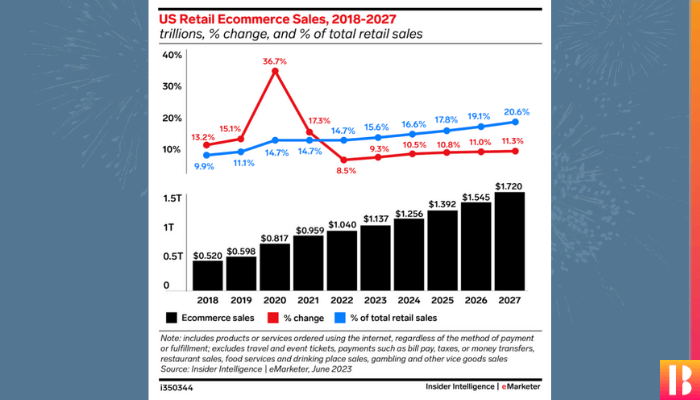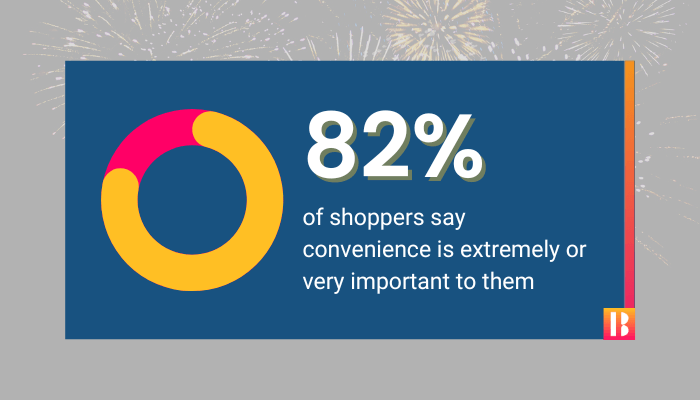What’s In Store for Retailers Next Year?
Reading Time: 10 Minutes
As the year draws to a close, let’s examine the transformative shifts that colored the retail industry in 2023. Plus, let’s look forward to 2024 – a year that will redefine retail, challenge norms, and offer growth opportunities.
Last year, retailers zeroed in on buy now, pay later (BNPL) services, the explosion of private label, TikTok’s grip on shoppers, and the power of data and analytics. These topics will still be top-of-mind for retailers headed into the new year, but we’re also giving attention to these 5 retail trends:
- New applications of AI
- Ecommerce
- Convenience
- Retail media networks
- Deals
The list could go on… there’s so many influencing factors (sustainability, omnichannel shopping, subscription models, transparent supply chains, and localized strategies) that play a role in successful retail performance management.
1. Advantageous Artificial Intelligence
No surprise here: Artificial intelligence and machine learning will be a serious driver of retail automation, cost savings, and optimization.
In retail, cutting-edge AI solutions play a powerful role in data aggregation, personalization, inventory management, and pricing.
We think AI adoption will be swift given its useful applications across the business. Think about how far ChatGPT came in just a year. Use your AI tech to answer those hard category, assortment, or pricing questions. AI should give you invaluable insights into the competitive landscape so you can develop a proactive, data-driven approach that builds greater customer loyalty.
2. Effective Ecommerce
Ecommerce will be the leading catalyst behind retail sales growth.
Ecommerce will grow by double digits through 2027, according to Insider Intelligence. And, it’s important to call out that what people are buying online is shifting… grocery, health, and personal care will increase their share of online sales. The growth has begun: In Q3 2023, 12.88% of grocery sales were digital and sales will keep ticking up from there.

A record 200.4 million consumers shopped over the “Cyber Five” weekend, up 1.9% year-over-year (YoY), per a survey by the National Retail Federation. The number who visited a store fell 1.1%, but the number who shopped online grew 3.1%.
We think retailers should continue their focus on ecommerce optimization. Use your data to be more competitive online – understand availability or out of stocks, identify assortment gaps, optimize prices, and provide unmatched shipping / pickup options.
3. Complete Convenience
Convenience will reign king in retail as consumers opt for accessibility, availability, and ease.
A reason ecommerce will grow centers on the importance of convenience. Shoppers choose their shopping journey… curbside pickup, in-store pickup, Shipt delivery, standard delivery, or parcel locker delivery… 95% of consumers go elsewhere if an online store doesn’t offer the desired delivery option.
Beyond delivery options, shoppers expect a seamless omnichannel experience. Omnichannel (or hybrid) shopping is here to stay. A few stats to consider:
- 82% of shoppers say convenience is extremely or very important to them.
- In as few as 5 – 7 years, 70% of consumers will be grocery shopping online.
- 59% of consumers say they’re likely to browse online and buy in-store.
- Gen Z shoppers are 30% more likely to consider self-checkout as a key component of convenience compared to other generations.
We think retailers have to compete on convenience to win consumer dollars. That means understanding the competitive landscape (prices, availability, promotions, assortment). If you win online, you’ll win in store.

4. Relevant Retail Media Networks (RMN)
Retail media ad spend shows no signs of slowing down and offers retailers a way to boost profitability and build brand relationships.
eMarketer predicts US retail media ad spend will more than double by 2027, exceeding $100 billion.
We think that digital is the future for grocery retail. It’s important for retailers to enhance their offerings and give consumers a great online experience. You should expect for RMNs to see more standardization next year. Like IPG Mediabrands mentions, “when emerging retailers realize advertisers aren’t buying their inventory because their data and activation don’t align with bigger players, they’ll adjust to match market leaders or risk wasting their investment.”
5. Deliberate Deals & Value
Price and value will continue to be top of mind for consumers.
As Forrester notes, “higher prices have taken a bite out of pandemic-era savings.” No, consumers won’t stop spending, but they’ll look to maximize their value.
53% of global consumers are actively looking to reduce spending on food and beverage. Consumers’ quest for savings extends to a heightened interest in discounts… 73% of consumers report that discounts for grocery items have become more important in their shopping decisions compared with a year ago.
We think deals and promotions are going to remain essential to driving consumer spending in 2024. Retailers should prioritize a data-backed pricing strategy, monitor competitor promotions, and identify valuable product offerings.
Strategic Retail Decisions
No matter the year… retailers must adjust and innovate to stay competitive.
This year, we’re looking forward to serious ecommerce growth, finding innovative applications of retail AI, and original ways to meet customer demands on convenience and value, and the business role of retail media networks. As the year moves on, we’ll surely see more trends that present retailers with opportunities to build loyalty and drive growth.
The Latest Insights – Straight to Your Inbox
Sign up for the Bungee Tech mailing list for actionable strategies, upcoming events, industry trends, and company news.














